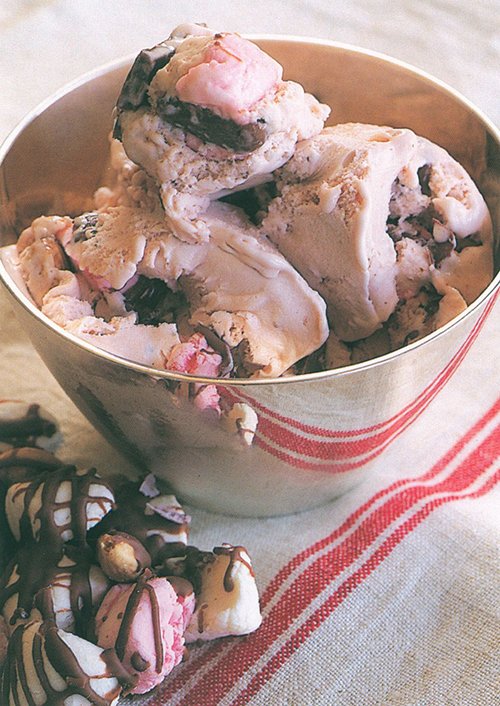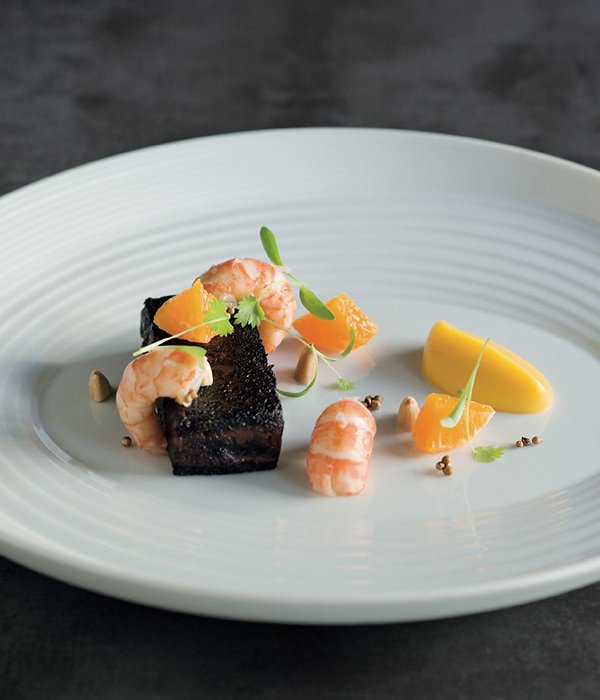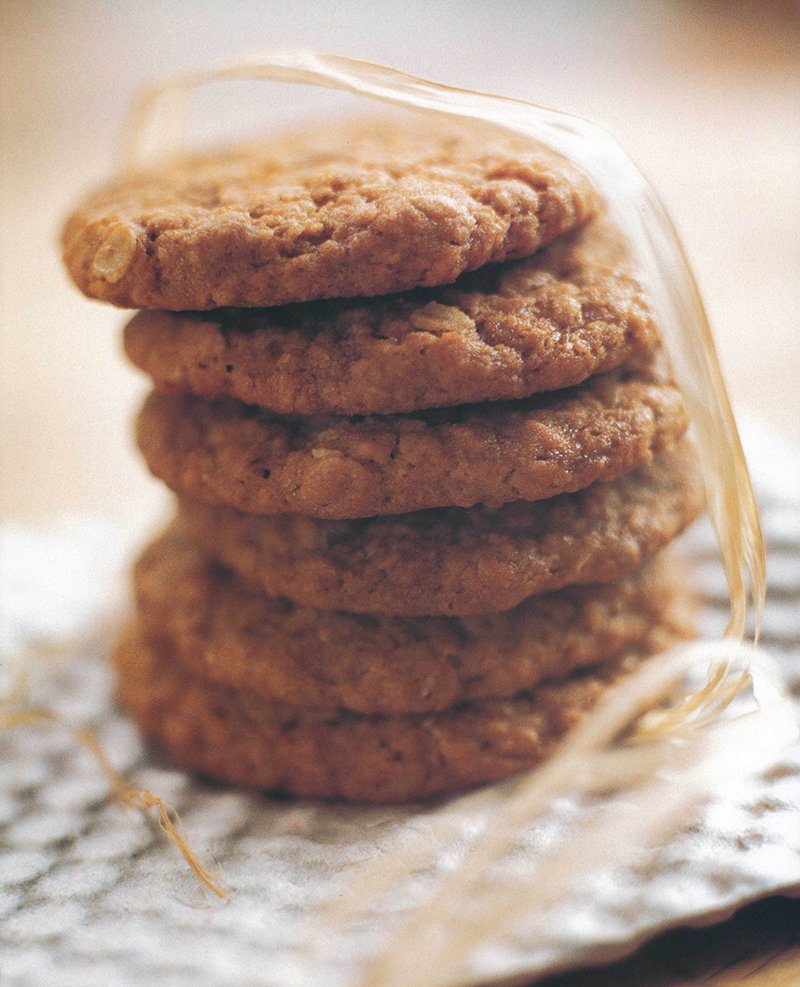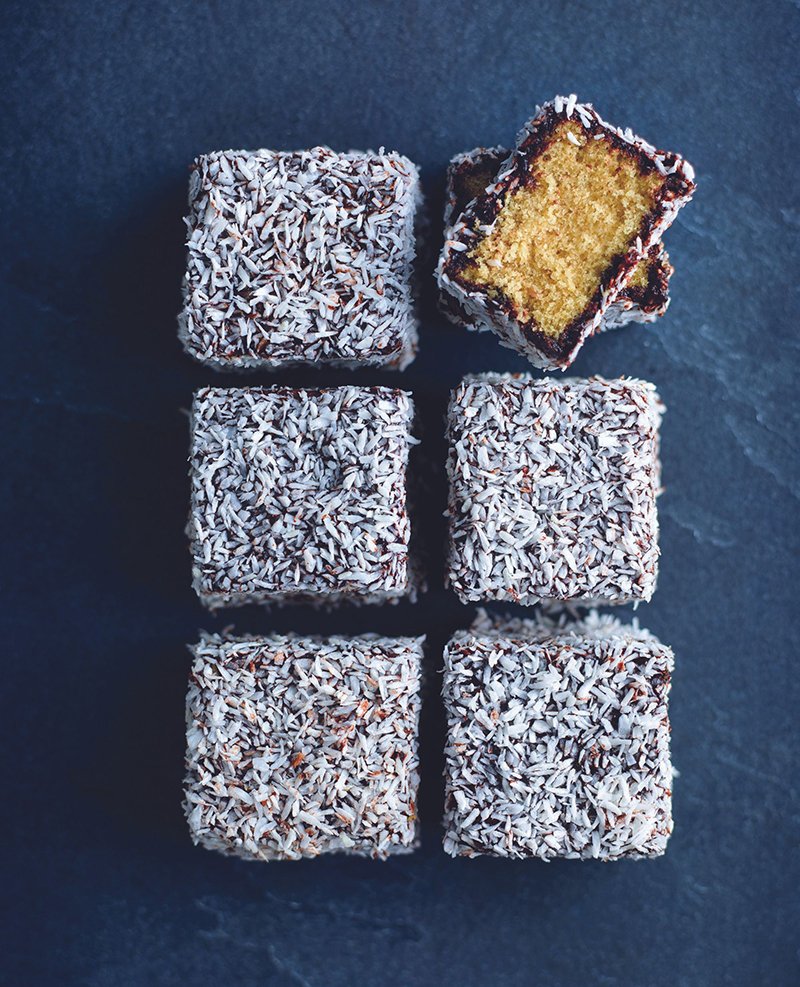Advertisement
ckbk’s Australian collection: The evolution of a cuisine
1 March 2022 · Discover ckbk · Regional cooking

A Taste of Australia: The Bathers Pavilion Cookbook: a “key text'“ of Australian cuisine according to Nigella Lawson.
Newly arrived on our virtual bookshelves is A Taste of Australia: The Bathers Pavilion Cookbook, written by Victoria Alexander and Genevieve Harris.
For Nigella Lawson, The Bathers Pavilion Cookbook is an essential Australian food title. Lawson included it in her top 10 list for the 1000 Cookbooks project, noting: “Long before I started writing about food, I was inspired by the vibrancy of Australian cooking and this book – along with The Cook’s Companion by Stephanie Alexander – was (and remains) a key text for me.”
To mark the book’s ckbk debut, we’ve taken the opportunity to explore more Antipodean titles in ckbk’s collection and to highlight some of the region’s key chefs, recipes, restaurants, flavors, influences, and cooking trends.
We meet author and food critic Jill Dupleix, who gives a taste of some of the best of Australian cooking, and we hear from Bathers Pavilion co-owner and co-author Victoria Alexander about how the restaurant helped to shape and define what we now think of as Modern Australian cooking.
We also catch up with Sydney-based food writer Barbara Sweeney to discuss Australia’s “fine art” café culture, which, Sweeney says, has “influenced the world over.” Come along for the ride…
“The newest and oldest cuisine on the planet”
Victoria Alexander had never worked a day in a restaurant before starting The Bathers Pavilion back in 1988. She says: “It was a steep learning curve at a time when there was no Modern Australian cuisine or style yet defined. A highlight during the early days was a review in the New York Times stating Bathers was the quintessentially Australian experience thereby adding a beginning to that definition." (The New York Times review also praised the restaurant’s Bali-influenced Slow-Roasted Duck Salad with Coconut and Ginger Dressing and its “simple and homey” desserts – try the Mango and Passionfruit Trifle, Coconut Bavarois with Tropical Fruit and Strawberry Rocky Road Ice Cream.)
Inspired by the magnificent sea view in Balmoral, a suburb about five miles north of central Sydney, chef Genevieve Harris’ food responded to its location. Alexander says: “The position right on the white sands of Balmoral is sublime and undoubtedly adds to the longevity of its success. I designed the feel of the restaurant to reflect what was outside. The food was part of that casual feel, along with some of the first deconstructed, ungarnished plates in Sydney – something that is now a worldwide given.”
Author and food critic Jill Dupleix acknowledges just how far the nation’s cuisine has come in recent generations: “It wasn’t that long ago that Australian food meant the soup of the day was pumpkin, the Sunday roast was lamb, pud was pavlova, and the beverage of choice was a cold beer. Australian food has been getting more Australian, and not before time. Sour, astringent native berries, juicy sea succulents, and lightly gamey kangaroo and wallaby now inspire chefs and get chucked on the barbie, or into salads at home. It’s the newest and oldest cuisine on the planet.”
Fusion cuisine: a new way of cooking
For Jill Dupleix, fusion cuisine is Australian cuisine: “Many of our pioneering chefs were self-taught. They had technique but they were not restricted by dogma and convention. Chefs such as Neil Perry, who founded Rockpool restaurant, Christine Manfield of Paramount and The Universal, and Tetsuya Wakuda of Tetsuya’s, all in Sydney, created a new way of cooking and dining through sheer force of their own personalities and their belief and pride in who they were and where they were.
“They all fused classic technique with an Asian sensibility and the best produce in the land. Like Tetsuya’s confit of ocean trout – a golden arc of marbled, flesh-pink Tasmanian fish roofed with crunchy kombu seaweed, one of the many cross-overs that inspired a generation of chefs including Martin Benn and Peter Gilmore.”
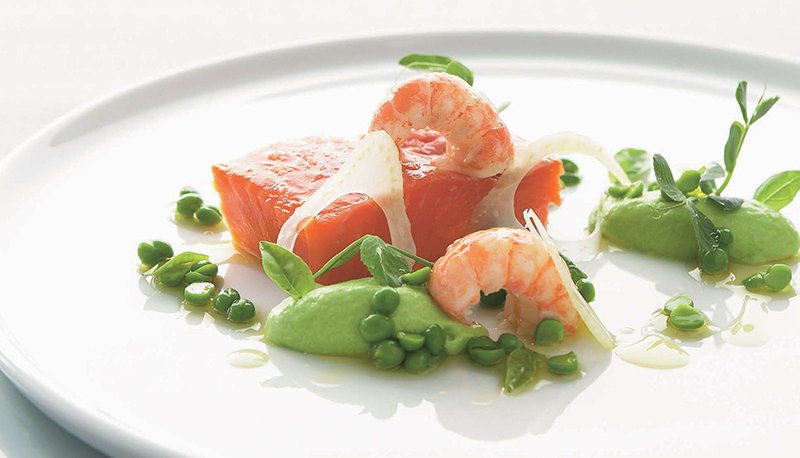
Inspired by Tetsuya Wakuda: Confit of Ocean Trout with Yabbies, Pea Mousse and Fennel from Pier: A Unique Australian Seafood Experience.
One of ckbk’s most popular Australian cookbooks is Mr Hong, which fuses influences from Vietnam, China, and Mexico. The book features the likes of Chawanmushi, Spanner Crab and Shellfish Oil, a homage to Hong’s time with Tetsuya; Sashimi of Tuna with Sweet Wasabi, Soy Ginger Dressing, a signature dish from Hong’s legendary Sydney restaurant Lotus; and Steamed Pacific Oysters with XO, Vermicelli, Ginger and Shallots. Hong says: “I use really huge Pacific oysters in it because that’s what they are best for (anyone who eats those things raw is doing it wrong).”
New Zealand-born, world-influenced Peter Gordon made the Antipodean fusion style his signature at London restaurant Sugar Club, which he opened in 1995. His The Sugar Club Cookbook features favorites from the restaurant, and his original and eclectic style of cooking can be found in later titles A World in My Kitchen and Fusion: A Culinary Journey.
Born in Australia and raised in New Zealand (and heavily influenced by time spent in Japan), chef Nic Watt also made a name for himself with an eclectic, Asian-influenced cooking style at London restaurant Roka. Now he is back in Auckland at Masu restaurant, and his book Masu: Fresh, Contemporary, Accessible Japanese for the Home Cook celebrates its award-winning food. Highlights include bringing pavlova bang up to date in White Miso Pavlova, his Drunken Pineapple (“when people ask me to bring a plate to a barbecue, I often bring this”) and dishes such as Eggplant with Ginger Miso and Sesame and Beef Tataki, Ginger Ponzu, Garlic Chips.
For Dupleix, fusion cooking is deeply tied to Australia’s identity: “After a heinous history of welcoming/not welcoming/welcoming/not welcoming the people of Asia to Australia, there was a collective realisation (about the time we all started flying to Bangkok and Hong Kong for holidays) that Australia was a part of Asia.
“In New Food, I described Australian food as being part Mediterranean (immigration, climate, open-air cooking), part Asian (casual, punchy flavors, climate, lifestyle) and part cake (reflecting white Australians’ British heritage and proud history of baking). Now, thank the lord, we acknowledge and have a growing pride in the ingredients in our own backyard and the resilient people who have lived here for tens of thousands of years.”
Antipodean café culture

Hugely influenced by early Greek and Italian immigrants, Australia has a rich café culture. Food writer Barbara Sweeney says: “both Melbourne and Sydney once boasted ‘Italian’ suburbs, where we all learned about macchiatos, panini and gelato. Greek, Turkish and Lebanese migrants also added to our café story with their own cafés, where men sat together and gossiped, fingered their prayer beads, and played backgammon.”
The culture of small bars evolved in Melbourne before other parts of Australia, as licensing laws were broader than in Sydney and allowed alcoholic drinks to be served without food. But back to cafés; as Sweeney says: “Melbourne is certainly ahead of the pack, but you’ll find a great coffee experience almost anywhere you go these days.”
Chef and restaurateur Bill Granger is credited for bringing the easy-breezy Aussie café style to Sydney in the 1990s when he moved there from Melbourne. Dupleix says he “rethought the café experience to be fresh, sunny, healthy, indulgent – and caffeine-fuelled – and suddenly the way we used a café changed, became more of a social experience and a real alternative to restaurants and pubs. He packaged up all we love about cafés, upgraded it with clever cooking, a stylish space and table service, and sent it out into the world.” As Sweeney says: “Cafés are where you go for a caffeine hit and some tasty, well-priced food, but cafés are also places where we shoot the breeze, work, meet up, chill out and watch the world go by.”
Now something of an institution in Australia and epitomizing the laid-back Australian vibes, Paul Allam and David McGuinness’ Bourke Street Bakery started out as a neighbourhood bakery in the Sydney suburb of Surry Hills in 2004 and there are now 12 branches across Australia. Their famed Flourless Chocolate Cake (“basically a cooked mousse”) is a must-bake from the Bourke Street Bakery book.
Café culture is beloved of New Zealand too – the successful Ripe Deli in Auckland has published a number of cookbooks. Try Ripe Recipes by Angela Redfern for its flavor-packed, unpretentious, seasonal food.
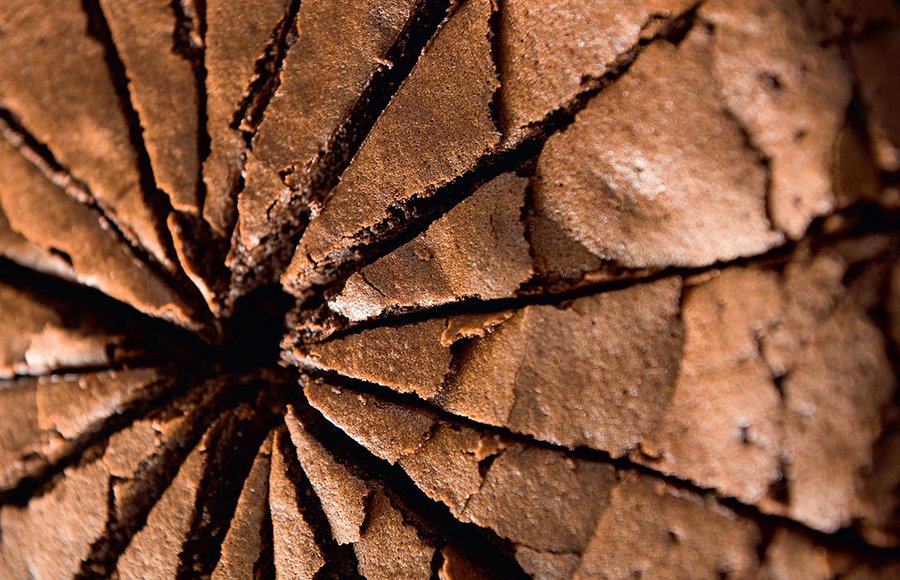
Flourless Chocolate Cake (“basically a cooked mousse”): a must-bake from the Bourke Street Bakery book.
Ingredient-led cooking
Australia is blessed with some of the best seafood and wild-caught fish in the world. Although now closed, Greg Doyle’s Pier was renowned as one of the best seafood restaurants in Australia. Recreate iconic dishes from the Pier cookbook such as Sydney Rock Oysters with Cucumber and Chive Vinaigrette, Harbour Prawns Marinated in White Balsamic, Thai-Influenced Sashimi of Kingfish, and Tetsuya-influenced Confit of Ocean Trout with Yabbies, Pea Mousse, and Fennel.
Yabbies, by the way, are small freshwater crayfish and make their way onto many high-end Australian menus, from Brent Savage’s Boudin Noir with Yabbies, Mandarin, and Almond, served at his super-chic Sydney restaurant Bentley, to Bathers’ Yabbies in a Coconut Milk and Tomato Broth.
Definitions of seafood between Europe, the US, and Australia can be fluid, however. Chef Neil Perry says: “There are many crustaceans around the world known as lobster. The fact is that what Australians call lobster is really seawater crayfish. What Europeans and Americans call lobster has two claws and looks like a giant yabby. Australian ones have a different texture, which I’m fond of”. However you define it, Perry’s Roast Lobster with Herb Butter is definitely one to bookmark.
At Melbourne’s Attica, chef Ben Shewry has been led by ingredients in a way that Dupleix describes as “almost militant in his reinvention of Australian food.” Known for his passion for foraging and – as he describes in his book Origin – creating dishes “that are a pure expression of their ingredients,” Shewry has brought native Australian ingredients front and center in his cooking. Dishes such as Native Fruits of Australia, Autumn Apples, Asparagus, Buttermilk, Smoked Oil and Abalone, Seaweeds and Salt from the same Environment do just this, while Violet Crumble is a nod to the Aussie chocolate bar of the same name.
About 450 miles away, Australia’s Southern Highlands region has been described as a forager’s dream. It’s also the backdrop for another ckbk title, James Viles’s Biota, celebrating the beautiful landscape of this part of the country. Executive chef of Sydney’s Quay restaurant Peter Gilmore has also done a lot of research into native Australian ingredients. His book Organum features snowberries, “a unique berry that is native to Tasmania,” wallaby tail (Tasmania is the only Australian state where it is legal to harvest wallaby), and The Reef, a dish inspired by the diversity of the Great Barrier Reef. His Eight-Texture Chocolate Cake (unsurprisingly) is one of the most frequently accessed recipes on ckbk.

Snowberries from Organum: “The snowberry grows wild in alpine regions of southern Tasmania.”
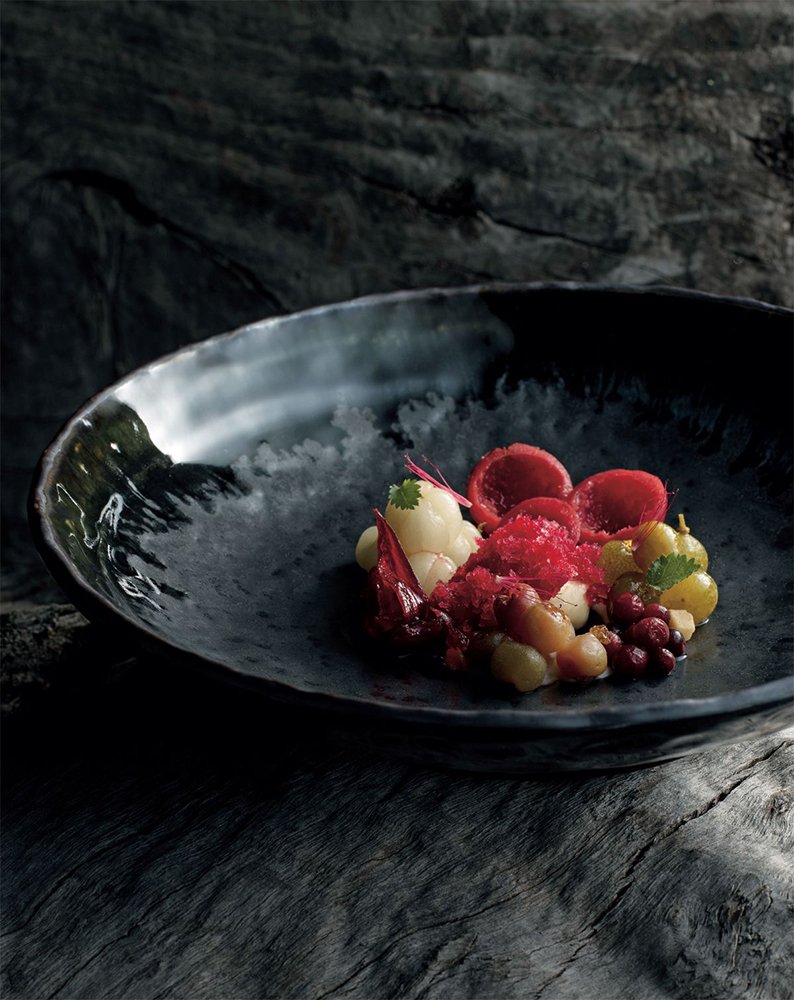
Native Fruits of Australia from Origin: “This dish was born of the idea that Australians should take pride in their native products.”
What next?
Dupleix describes two major trends in Australian food right now: “One is that our next-generation chefs of Asian heritage are reclaiming Asian food and having so much fun with it.” She cites chef Khanh Nguyen’s pâté en croûte with banh mi flavours (from Melbourne restaurant Aru) as an example of this trend.
“The other is that we are waking up to the joys of all the beautiful food created by migrant families in suburban backyards in our cities and country towns ... and reclaiming them with pride. Maurice Terzini of Icebergs in Bondi [in Sydney] is opening Cucina Povera Vino Vero based on the garages he experienced as a child, with the old fellas making grappa and the mums rolling pasta. Baba’s Place in Sydney commandeers a warehouse, installs lace curtains and doilies and plastic-covered tables, and cooks Greek, Macedonian, and Lebanese migrant food of restaurant quality with pride and humor.
“That said, I will never give up the great farmhouse baking and grilling of my childhood – the Anzac Biscuits, the Lamingtons (omigod, check out Tokyo Lamington online, they are the ultimate), the grilled lamb chops. Especially the grilled lamb chops. As a child, I had them with mashed potatoes and peas. Now I have them with a pinch of native pepperberry, tzatziki, and pickles and maybe couscous or tabbouleh, and a glass of Australian Pinot Noir or Gamay. That’s the perfect story of our evolution as a food nation.”
More features from ckbk
Australian baker and YouTube star Ann Reardon tells us about her culinary inspirations, and the growing problem of fake viral recipe videos
The leading writer of historical fiction on Victorian cookbook writer Eliza Acton.
Our collection covers everything from books for budding bakers to works aimed at baking pros.
Sign up for ckbk's weekly email newsletter
Advertisement

